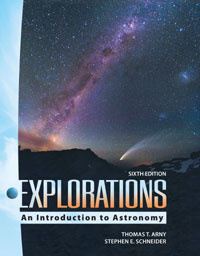1 A) A glowing trail of hot gas and debris heated by friction as an object moves through the atmosphere. B) A space rock that survives its fall through the Earth's atmosphere and reaches the ground. C) The object that causes a "shooting star," but before it passes through the atmosphere. D) Any one of the large, rocky bodies that orbit the Sun, primarily between Jupiter and Saturn. 2 A) A glowing trail of hot gas and debris heated by friction as an object moves through the atmosphere. B) A space rock that survives its fall through the Earth's atmosphere and reaches the ground. C) The object that causes a "shooting star," but before it passes through the atmosphere. D) Any one of the large, rocky bodies that orbit the Sun, primarily between Jupiter and Saturn. 3 A) A glowing trail of hot gas and debris heated by friction as an object moves through the atmosphere. B) A space rock that survives its fall through the Earth's atmosphere and reaches the ground. C) This is the object that causes a "shooting star," but before it passes through the atmosphere. D) Any one of the large, rocky bodies that orbit the Sun, primarily between Jupiter and Saturn. 4 A) Astronomers have studied meteorites that originated in the asteroid belt. B) Astronauts have landed on the asteroid Ceres and brought back rock samples from it. C) The spectrum of sunlight reflected from an asteroid shows absorption features, from which we can determine its composition. D) Both a and c. 5 A) Earth and Mars. B) Saturn and Jupiter. C) Venus and Earth. D) Mars and Jupiter. 6 A) Asteroids that the Apollo astronauts brought back with them from their trips to the Moon. B) Asteroids near the sun (named for the ancient Greek sun god, Apollo). C) Asteroids with orbits that bring them into the inner Solar System and across Earth's orbit. D) Asteroids that are made primarily of gold. 7 A) Ceres is near Earth; it was shaped into a sphere by Earth's gravitational force. B) Ceres is relatively massive; its gravitational force is strong enough to crush its material into a sphere. C) Ceres is near the Sun; the Sun's heat melted Ceres, and it solidified into a sphere. D) Ceres is shaped like all the other asteroids. 8 A) The asteroids are probably fragments of planetesimals. B) inner belt asteroids are richer in silicate and iron materials and contain fewer carbon-rich materials. C) Both A and B. D) Neither A or B. 9 A) small, medium and large. B) organic, inorganic, vegetal C) iron, stony, stony-iron. D) red, yellow and blue. 10 A) the breakup of asteroids that hit our atmosphere at predictable times. B) the Earth passing through the debris left behind by a comet as we cross its orbit. C) nuclear reactions in the upper atmosphere triggered by meteoritic particle storms. D) passing asteroids triggering auroral displays. 11 A) A swarm of comet nuclei in a huge shell surrounding the Sun and planets. B) A large belt containing asteroids in a gap between the orbits of Mars and Jupiter. C) A disklike swarm of icy objects that lies from near the orbit of Neptune to past Pluto's orbit. D) An enormous aggregate of gas and dust from which the Solar System was formed. 12 A) is gas and dust pulled off the comet by the Sun's gravity B) always trails behind the comet. C) is gas and dust expelled from the comet's nucleus by the Sun's heat and radiation pressure, and always points away from the Sun. D) is composed mainly of captured particles from the solar wind. 13 A) The "gas tail" is formed by solar radiation pressure. The "dust tail," is pushed out by the solar wind B) The "dust tail" is formed by solar radiation pressure. The "gas tail," is pushed out by the solar wind. C) Comets contain iron, which is attracted by the Sun's gravity, forming a tail which points toward the Sun. D) The statement is false: comets have only one tail. 14 A) A Mexican town in the Yucatan near which a major impact may have occurred 65 million years ago. B) Chicxulub is the site of the failed launch of a Soviet space mission to the asteroid belt. C) This is the name of a comet that may have crashed into Earth exterminating the dinosaurs. D) Chicxulub is a type of large asteroid. 15 A) The dinosaurs, as well as large numbers of other animals and plants, disappeared rather suddenly. B) There is iridium (rare on Earth, but abundant in meteors) and soot (evidence of wide spread fires) in a layer of clay laid down 65 million years ago. C) Astronomers have found evidence for a 65-million-year-old impact crater in the Yucatan. D) All of the above.





